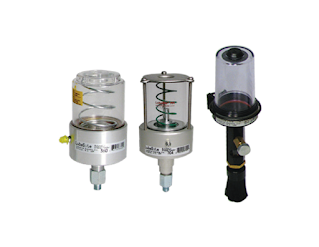Troubleshooting Common Issues in Industrial Gearboxes: Expert Insights
Industrial gearboxes are fundamental components in a wide array of machinery, from manufacturing plants to power generation. Their role in ensuring smooth and efficient mechanical operations cannot be overstated. However, like any mechanical system, gearboxes can experience issues that, if not addressed promptly, can lead to significant downtime and repair costs. This blog provides expert insights into troubleshooting common issues in industrial gearboxes, helping you maintain optimal performance and longevity of your equipment.
1. What is Gearbox ?
Before diving into troubleshooting, it's crucial to understand the basics of gearbox operation. A gearbox is a mechanical device that transmits power from an engine or motor to drive different types of machinery. It consists of various components, including gears, shafts, bearings, and lubrication systems. The primary function of a gearbox is to change the speed and torque of the machinery it drives.
2. Common Issues and Their Causes
a. Overheating
Symptoms: Excessive heat, oil leakage, burnt odor.
Causes: Overheating in gearboxes is often due to excessive friction, inadequate lubrication, or overloading. Insufficient cooling and high ambient temperatures can also contribute to overheating.
Troubleshooting Tips:
Check the lubricant level and quality. Use the manufacturer-recommended lubricant.
Ensure that the cooling system is functioning correctly and clean any clogged heat exchangers.
Inspect the gearbox for signs of overloading and reduce the load if necessary.
Verify that the ambient temperature is within the recommended range for the gearbox operation.
b. Unusual Noise and Vibration
Symptoms: Grinding, whining, clunking noises, and excessive vibration.
Causes: These symptoms can result from misaligned gears, worn or damaged bearings, loose components, or inadequate lubrication.
Troubleshooting Tips:
Perform a thorough inspection of the gearbox for any signs of wear or damage.
Check and adjust gear alignment according to the manufacturer's specifications.
Replace worn or damaged bearings promptly.
Tighten any loose components and ensure proper lubrication.
c. Oil Contamination
Symptoms: Discolored oil, presence of metal particles or debris in the oil.
Causes: Contamination can occur due to inadequate sealing, poor maintenance practices, or external environmental factors.
Troubleshooting Tips:
Regularly inspect and replace oil filters to prevent contaminants from entering the gearbox.
Ensure that the seals and gaskets are in good condition and replace them if necessary.
Implement proper maintenance practices, including regular oil changes and cleanliness of the operating environment.
d. Gear Wear and Pitting
Symptoms: Surface damage on gears, reduced performance, increased noise.
Causes: Gear wear and pitting are often caused by insufficient lubrication, overloading, or poor alignment.
Troubleshooting Tips:
Maintain proper lubrication levels and use the correct type of lubricant.
Avoid overloading the gearbox by adhering to the recommended load limits.
Regularly inspect gear alignment and make adjustments as needed.
Consider using high-quality gears with improved material properties for increased durability.
e. Bearing Failures
Symptoms: Excessive noise, vibration, and increased operating temperature.
Causes: Bearing failures can be attributed to poor lubrication, misalignment, excessive load, or contamination.
Troubleshooting Tips:
Ensure proper lubrication of bearings and use the manufacturer-recommended lubricant.
Regularly inspect and adjust bearing alignment as per the manufacturer's guidelines.
Avoid overloading the gearbox to prevent excessive stress on the bearings.
Keep the gearbox and its surroundings clean to minimize contamination risks.
3. Preventive Maintenance Strategies
Implementing preventive maintenance strategies is essential to avoid unexpected gearbox failures and extend their lifespan. Here are some expert recommendations:
a. Regular Inspections
Conduct regular visual and operational inspections of the gearbox to identify any signs of wear, damage, or abnormalities. Pay close attention to lubrication levels, gear condition, and bearing performance.
b. Vibration Analysis
Vibration analysis can help detect early signs of misalignment, imbalance, or bearing issues. Use specialized equipment to monitor vibration levels and take corrective actions as needed.
c. Oil Analysis
Perform routine oil analysis to monitor the condition of the lubricant and detect any signs of contamination or degradation. This can help identify potential issues before they escalate.
d. Temperature Monitoring
Monitor the operating temperature of the gearbox to ensure it remains within the recommended range. Abnormal temperature fluctuations can indicate underlying problems.
e. Scheduled Maintenance
Follow a scheduled maintenance program that includes regular oil changes, lubrication checks, and component replacements. Adhering to a maintenance schedule can prevent unexpected breakdowns and extend the lifespan of the gearbox.
4. Conclusion
Troubleshooting common issues in industrial gearboxes requires a comprehensive understanding of their operation and potential failure modes. By identifying and addressing problems early, you can minimize downtime, reduce repair costs, and ensure the reliable performance of your machinery. Implementing preventive maintenance strategies further enhances the longevity and efficiency of industrial gearboxes. Remember, regular inspections, proper lubrication, and adherence to manufacturer guidelines are key to maintaining optimal gearbox performance.
By following these expert insights, you can effectively troubleshoot and resolve common issues in industrial gearboxes, keeping your operations running smoothly and efficiently.




Comments
Post a Comment